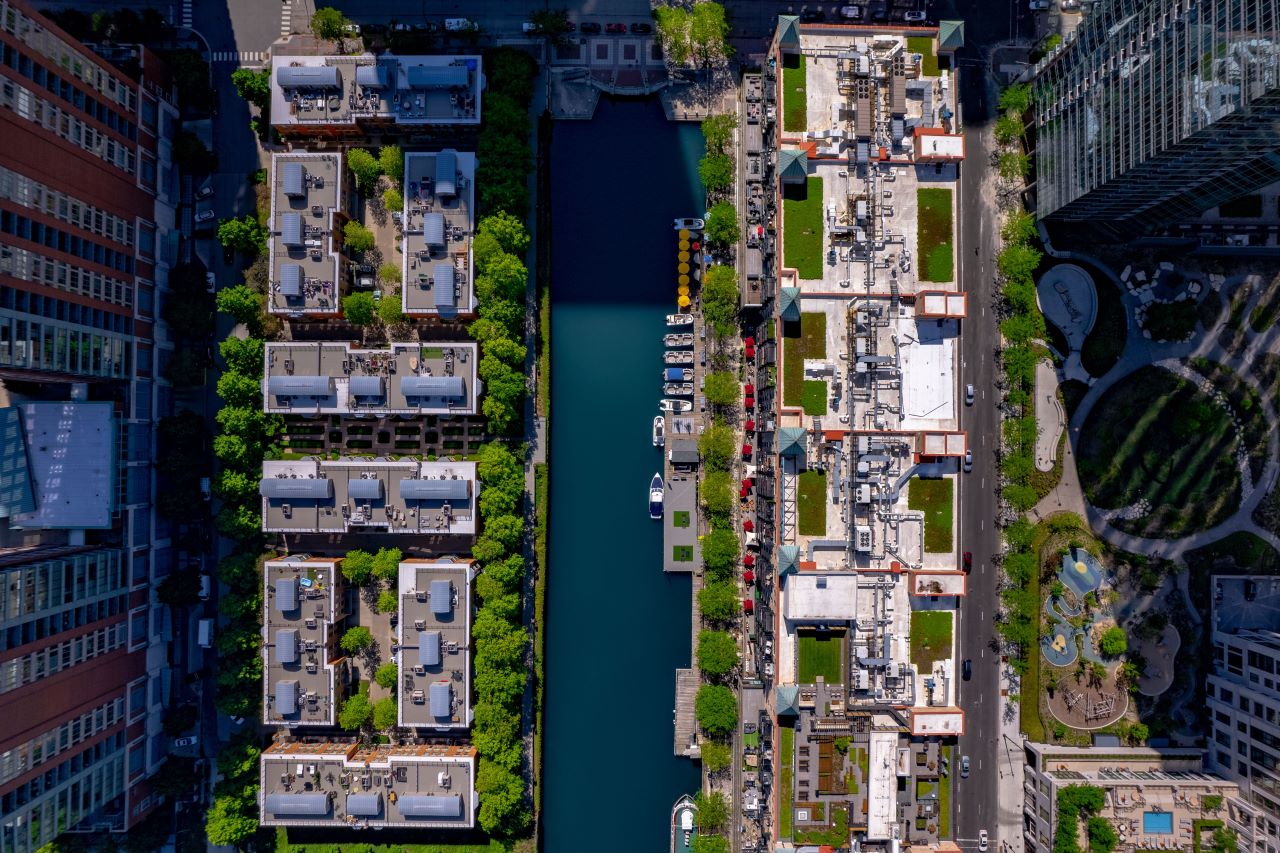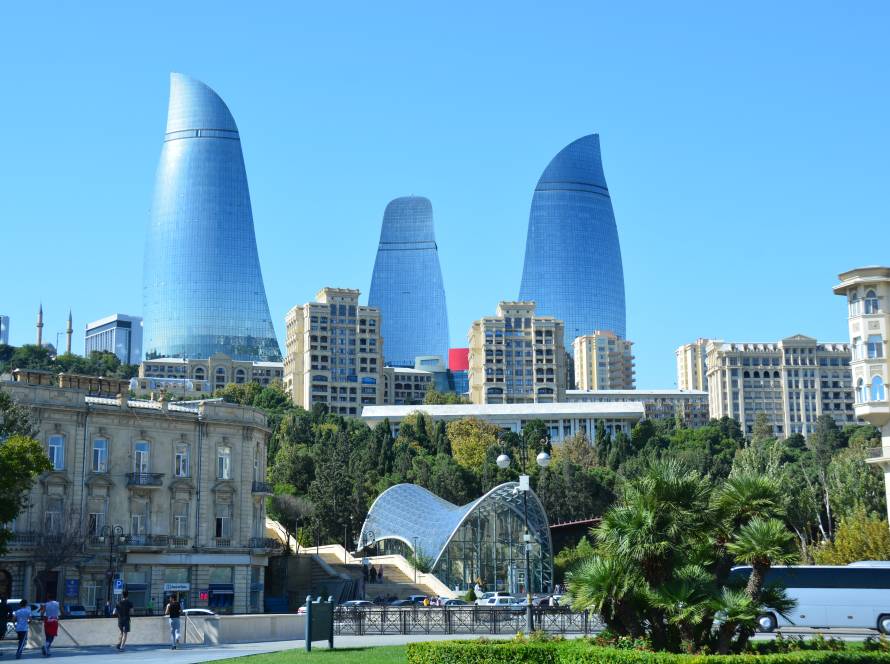A
s the world urbanises at an unprecedented rate, cities have become ground zero for attaining the Sustainable Development Goals by the 2030 deadline. Currently home to 55% of the global population, cities account for over 70% of greenhouse gas emissions while remaining disproportionately vulnerable to climate change’s escalating impacts like rising sea levels, heat waves, droughts, and intensifying storms.
However, this era of acute urban challenges has catalysed a renaissance in rethinking the very foundations of how we design, build, power, and govern the cities of the future. From pioneering green buildings, decarbonized transit systems, and smart disaster preparedness to holistic slum upgrading initiatives and tech-enabled community resilience programs, local leaders are harnessing the power of innovation and stakeholder collaboration to future-proof the world’s urban centres.
As the 2024 milestone for assessing progress on Sustainable Development Goal 11 (Sustainable Cities and Communities) approaches, these revolutionary models offer actionable blueprints for ushering in a new age of sustainable, equitable, and resilient metropolitan life.
Towards Zero-Carbon Buildings: Green Architecture and Construction
Among cities’ most pivotal decarbonization opportunities is the building sector, historically accounting for nearly 40% of global carbon emissions and a substantial share of urban waste footprints. However, holistic design philosophies emphasising energy efficiency, electrification with renewable power, and sustainable materials sourcing could slash this outsize impact.
Leading cities and private builders are ushering in a paradigm shift centred around ultra-high efficiency “green buildings” integrating passive design elements like natural ventilation and lighting while incorporating on-site renewable energy generation. These smart buildings are effectively zero operational carbon once electrified and grid-integrated with clean power sources.
In 2022, New York City enacted its visionary “Environmental Life Cycle” buildings laws, mandating whole-lifecycle sustainability accounting and strict performance standards for new construction projects. Other cities like Vancouver and Sydney have implemented similar robust codes compelling private builders to embrace low-carbon, resiliency-minded designs from foundations to rooftops.
“Rather than incremental progress, policymakers must start baking aggressive sustainability metrics into all future urban development,” said Amanda Sturgeon, CEO of the International Living Future Institute (ILFI), which has pioneered regenerative green building certifications like the Living Building Challenge. “By harnessing biomimetic design synergies spanning ultra-efficiency, renewables, waste reuse, and nature-connectivity, buildings can transition from environmental burdens to net-positive sustainability solutions.”
After decades of under-prioritised construction methods contributing to outsized emissions and waste streams, this resurgent architectural renaissance marks a pivotal advance towards sustainable cities.

21st Century Mobility: Multi-Modal Transit and EV Ecosystems
Long defined by pollution-choked highways and over-dependence on private gasoline vehicles, modern cities are revolutionising mobility systems through carefully sequenced policies aligning public transit infrastructure, ride-sharing, cycling networks, and electric vehicle adoption. While contexts differ, multi-modal mass transit anchors decarbonized urban transportation networks.
China’s urban centres like Shenzhen and Shanghai exemplify aggressive strategies coupling expansive metro, bus rapid transit (BRT), bicycle superhighways, and a total phase-out of polluting internal combustion engines. Over a decade, Shanghai has added over 800 kilometres of rail transit lines to complement extensive BRT systems while investing in nearly 50,000 EV charging ports and electrifying its entire taxi fleet.
Smaller cities like Copenhagen and Oakland have demonstrated encouraging progress operationalizing systemic planning around walkability, dedicated cycling lanes, electrified public buses, and incentivized EV adoption programs. Oakland’s “Electric Cities” initiatives leveraged stakeholder engagement to develop the nation’s first integrated electric mobility roadmap addressing multi-unit affordable housing, electrifying public transit and municipal fleets, and targeted EV charger investment near disadvantaged communities.
“By adopting a comprehensive ecosystem approach and embedding electrification within wider mobility planning around affordability and equity, cities can unlock compounding benefits spanning decarbonization, public health, and social resilience,” said Bryant Terry, Executive Director of the Greenlining Institute which helped facilitate Oakland’s community engagement.
Pioneering transit innovations like e-bikes, electric micro-transit, and travel rebates further reinforce progressive cities’ suite of interventions decoupling urban mobility from unsustainable personal vehicle use and tailpipe emissions.
Urban Disaster Preparedness and Climate Resilience
As the destabilising impacts of climate change intensify across urban areas through intensifying storms, heat waves, droughts, wildfires, and flooding, city leaders are embracing multi-faceted resilience strategies mainstreaming climate risks into every dimension of planning and development. Creating proactive adaptation roadmaps and emergency management capacities for climate-related disasters is now an existential economic imperative.
Athens, selected as the European Commission’s first “Climate Resilient City”, has emerged as a global model implementing advanced early warning systems, climate stress mapping, emergency coordination, and nature-based flood mitigation solutions based on regional threats. The city established the Centre for Sustainable Mediterranean Cities (SRMC) to facilitate knowledge sharing with other climate-vulnerable Mediterranean urban centres.
“Cities must reorient away from reactive disaster responses toward end-to-end climate resilience planning cycles anticipating shocks based on actionable data and vulnerability assessments,” said Mayor Kostas Bakoyannis. “With these insights, smart prioritised investments in preparedness can build urban coping capacities minimising loss of life and disruptions to critical services.”
Athens’ approach has guided regions like Puerto Rico’s capital San Juan integrating GIS mapping of at-risk populations, evacuation route monitoring systems, and infrastructure retrofitting programs targeting stormwater management and coastal erosion post-Hurricane Maria.
Meanwhile, cities facing water scarcity and extreme heat are pioneering “sponge city” approaches maximising green space and permeable surfaces to mitigate urban flooding while investing in resilient built environments, water management systems, public cooling shelters, and heat action plans expanding access to energy-efficient cooling solutions for vulnerable populations.
While tailored for diverse local contexts, these multi-level resilience programs unite around leveraging data-driven insights activating proactive, targeted lifecycle investments advancing incremental urban adaptation and emergency preparedness at all scales.
Formalising Informal Settlements: Inclusive Slum Upgradation
Approximately 1 billion people reside in informal settlements across the world’s expanding mega-cities, most facing entrenched exclusion from land tenure, sanitation access, public services, and decision-making processes. To achieve sustainable urban development equitably, national and municipal authorities are pioneering strategies to upgrade slums, formalise property rights, and unlock economic empowerment opportunities for marginalised communities.
Innovative slum upgrading programs like Slum Dwellers International (SDI) and the Asian Coalition for Housing Rights leverage community-driven mapping to profile hyper-localised challenges so residents directly participate in designing customised solutions reflecting their needs. These range from incremental home improvements securing tenure to installing decentralised water/sanitation systems and building resilient critical infrastructure like footpaths.
In Nairobi, local SDI affiliate Muungano wa Wanavijiji successfully advocated with county governments to upgrade the massive Mukuru informal settlement. Residents financed community-led sanitation and solar street lighting projects through collective savings and government co-financing. Construction teams also formalised access roads, erected community centres, and secured land leases before the COVID-19 pandemic.
Grassroots movements like Peru’s MUDRI and Brazil’s UNMP have similarly mobilised communities capturing granular data informing holistic in-situ slum upgradation focused on affordable housing, livelihoods, public space access, tenure security, and local governance capacity building. When combined with municipal commitments integrating community mapping directly into development planning, such bottom-up initiatives can transform informal urban environments sustainably while empowering residents as stakeholders.
Innovative Urban Technologies Enabling Sustainability and Inclusion
While top-down policy interventions are crucial catalysts, scaling urban sustainability and resilience in practice requires deploying suites of intelligent digital solutions and citizen engagement. Cities and social enterprises are leveraging cutting-edge technologies for sensing, analytics, remote connectivity, and crowdsourced data collection empowering more effective and targeted policy implementation.
When combined with open government data ecosystems and community engagement platforms, cities gain robust decision-support tools optimising resource allocation and streamlining local climate action. Los Angeles’ “Control City” IoT command centre exemplifies such an integrated approach – aggregating data flows from millions of networked sensors into visualised intelligence layers guiding municipal service deployment. Through Control City, Los Angeles can survey air quality, map heat islands, detect pipe leaks, and coordinate emergency crews more holistically.
Anticipating urban risks and challenges through predictive modelling is another cutting-edge technological frontier. In Southeast Asia, city leaders are partnering with climate modelling firms like One Concern to aggregate granular urban and climate datasets informing preemptive interventions mitigating specific hazards. As One Concern’s AI platform expands across more cities, smarter zoning, infrastructure hardening, and public communications for flooding resilience and extreme heat mitigation become possible.
Technology is also fundamentally reshaping stakeholder engagement via apps and digital public participatory platforms. Urban activism shifted online through novel civic tech solutions during the COVID-19 pandemic as groups like Shack/Slum Dwellers International employed map-based mobile apps for community-driven data capture of service deprivations and infrastructure gaps across slums.
As blueprints for urban resilience illustrate, converging innovative technologies with stakeholder-driven policy solutions is key to transforming city systems sustainably and inclusively. Whether accelerating decarbonization through ultra-efficient buildings and electric mobility ecosystems, proactively hardening infrastructure against climate threats, formalising informal communities, or digitally empowering grassroots participation, cities charting these holistic pathways demonstrate the full transformative potential of Sustainable Development Goal 11.
While the challenges of realising the 2030 Agenda’s urban agenda are immense, breakthrough progress is unfolding thanks to the ingenuity and determination of local leaders forging multidimensional blueprints for urban resilience. By leveraging this growing body of innovative best practices, the sustainable, inclusive, and climate-resilient cities of tomorrow move closer towards reality with each passing year.


